Comparative Mythology and the Study of Modern Human Origins
One of the main thrusts of this weblog is the need to test models of human origins and dispersals derived from paleobiology, archaeology and genetics using independent datasets pertaining to human language and culture, the defining characteristics of behavioral modernity. Geneticists, archaeologists and paleobiologists are now disagreeing on virtually every aspect of the out-of-Africa scenario. There are two widely different mutation rates (germline and evolutionary) used to date the separation of gene lineages, two calibration dates for the human-chimp divergence, two possible dates for the putative expansion of modern humans out of Africa (>100K and >50K), three major geographic areas from which human dispersals in and out of Africa began (South Africa, East Africa and West-Central Africa), two solutions to explain the presence of divergent lineages outside of Africa (Neandertal admixture and African substructure). A similar situation has developed around the “peopling of the Americas,” with one-, two-, three-wave models sourcing support from various aspects of the data. While there is a lot of dispersal around the “mean,” geneticists and paleobiologists seem to be in agreement that most of our ancestry is derived from Africa and that America was peopled at a much later date than the other continents, tens of thousands of years after the founding out-of-Africa migration.
Sociocultural data, I argue, is painting a rather different picture. All the major centers of world linguistic diversity (New World and Papua New Guinea) are on the opposite side of the globe from Africa. From the point of view of linguistic typology, the Circumpacific region (including Australia, Papua New Guinea, island Melanesia, western parts of North and South America) is characterized by grammatical patterns fundamentally derived from the principle of head-marking that are ancestral to the dependent-marking-derived patterns observed in Africa, Europe and parts of continental Asia (Nichols J. Linguistic Diversity in Space and Time. Chicago, 1992).
Kinship studies have traditionally placed “elementary” structures in Australia, Papua New Guinea, parts of Asia and the New World and “complex” structures mostly in Africa and Europe. My recent research (The Genius of Kinship: The Phenomenon of Human Kinship and the Global Diversity of Kinship Terminologies) confirmed and deepened this East-to-West trend in the evolution of human kinship systems and terminologies.
Ethnomusicologists have identified two “roots” in the worldwide map of musical traditions – Sub-Saharan Africa (Pygmies and Bushmen) and Siberia-Patagonia, with a special loosely organized version of the former (Victor Grauer’s “canonic-echoic style”) also present in Amazonia and several isolated instances of the Pygmy-Bushmen style found in Papua New Guinea, Oceania, Southeast Asia and the Caucasus.
Interestingly, the critical axis between the New World (also the Sahul) and Africa detected by molecular geneticists (high intragroup diversity and heterozygosity coupled with low levels of linkage disequilibrium in Africa vs. high intergroup diversity, homozygosity and linkage disequilibrium in the New World and Papua New Guinea) in virtually all genetic systems studied to date transpires in sociocultural data, too. Regions outside of Africa, especially those most geographically removed from Africa, namely the New World and the Sahul, show high levels of linguistic, kinship-systemic and musicological differentiation and high degrees of structural conservatism. It means that patterns of cultural differentiation are directly correlated with levels of INTER-group molecular differentiation and inversely correlated with levels of INTRA-group molecular differentiation. The presence of ancestral forms of human social and cultural organization in the New World and the Sahul have very few parallels in molecular genetic data, although the high frequencies of archaic “Denisovan” alleles in Papua New Guinea followed by the New World as well as high frequencies of “Neandertal” B0006 haplotype on X chromosome in American Indians and of “N” lineage of STAT2 gene in Papua New Guinea may be pointing in the same direction.
In addition to linguistics, kinship studies and ethnomusicology, comparative mythology is another field that can contribute patterns of worldwide variation that can be analyzed within the out-of-Africa or out-of-America interpretative frameworks. Comparative mythology is an old field of study, which, similarly to musicology, has always occupied its own intellectual niche related to comparative ethnology but also tightly linked to linguistics, poetics and history of religion. Roland Barthes considered mythology a second-order semiological system. If language is organized as the unity of signifiers (forms) and signifieds (meaning), myth collapses this distinction, treats both aspects of the linguistic sign as just form and adds a third one, which is, properly speaking, a mythological mode of signification. When I discussed similarities between language and music in an earlier post, I highlighted the fact that the only thing that separates language and music is the presence of undifferentiated emotive meaning in music and the presence of discrete, combinatorial meaning in speech. Music, from this perspective, is proto-language because it lacks specialized, discrete semantics. If we include myth into this comparison, it can be thought of as “post-language” because mythological meaning presupposes the merger of discrete, semantic meaning with linguistic form. In evolutionary terms, musical expressions preceded fully articulated speech, while mythology needed a fully articulated speech to be in place in order to begin to flourish.
The students of comparative mythology, or folklorists, has long noticed that globally Barthes’s “mythological mode of signification” breaks down into a large number of recurrent elements generally referred to as “motifs.” These smallest meaningful units of folkloric texts cut across tribal myths, pre-industrial fairy tales, early medieval romance novels and can, arguably, be detected in modern “professional” literature. Unlike linguistic phonemes, every minimal unit of a folkloric text, or a “motif,” is meaningful in isolation from others. Motifs were first cataloged by Finnish folklorist, Antti Aarne (1867–1925), later expanded by the American Stith Thompson (1885-1976) to become the famous multi-volume Aarne-Thompson Index (ATI). Recently, the Aarne-Thompson Index has been updated by Hans-Jörg Uther (The Types of International Folktales: A Classification and Bibliography. Based on the System of Antti Aarne and Stith Thompson. Helsinki: Suomalainen Tiedeakatemia, 2004). The Aaarne-Thompson Index consists of over 2000 motifs.
Comparative folklorists usually pick one or several motifs and analyze their variants on a regional or global scale. One of the earliest examples is Hyacinthe De Charencey’s comparison of Old World and New World folkloric similarities (Le Folklore dans les Deux Mondes. Paris, Klincksieck, 1894). A similar effort was undertaken 10 years later by Paul Ehrenreich (Die Mythen und Legenden der Sudamerikanischen Urvolker und Ihre Beziehungen zu denen Nordamerikas und der Alten Welt. Berlin: von Asker, 1905). Katharine Luomala (Oceanic, American Indian and African Myths of Snaring the Sun. Honolulu, 1940) looked at the variants of the motif of Snaring the Sun across the New World, Oceania and Africa. Rudolph Rahmann (“Quarrels and Enmity Between the Son and the Moon: A Contribution to the Mythologies of the Philippines, India and the Malay Peninsula,” Folklore Studies 14, 1955, 202-214) analyzed variants of the motif of a quarrel between the Sun and the Moon in South and Southeast Asia. Claude Levi-Strauss authored a famous 4-volume set entitled Mythologiques in which he analyzed a large corpus of North and South American Indian myths to illustrate the binary mechanics of the human mind. Vladimir Napolskish (“The Diving-Bird Myth in Northern Eurasia,” Uralic Mythology and Folklore, edited by Mihály Hoppal and Juha Pentikäinen. Budapest: Ethnographic Institute of the Hungarian Sciences; Helsinki: Finnish Literature Society, 1989, 105-113; Drevneishie etapy proishozhdenija narodov ural’skoi jazykovoi sem’i: Dannye mifologicheskoi rekonstrukcii (praural’skii kosmogonicheskii mif). Moskva: Institut etnologii im. N. N. Mikluho-Maklaja AN SSSR, 1991) studied the variants of the Earth-Diver myth in northern Eurasia and North America. Or, they may study the whole genre of myths such as creation stories, which comprise multiple motifs (Booth, Anna B. 1984. “Creation Myths of the North American Indians,” In Sacred Narrative: Readings in the Theory of Myth, edited by Alan Dundes. Berkeley: University of California Press.)
The Russian scholar with a background in archaeology, ethnology and American Indian studies (although without any direct exposure to American Indian tribal cultures or a history of participation in archaeological digs in the New World), Yuri Berezkin, has been working over the past 30 years on a comparative mythology project, which is essentially an adaptation of the ATI of mythological motifs to the study of modern human origins and dispersals. Berezkin’s motifs do not always correspond to ATI motifs because Berezkin’s interest in mythology was nurtured through the reading the early Americanist tradition of myth recording and classification led by by such anthropologists as Franz Boas, Alfred L. Kroeber, John Swanton and others, who were swayed by the vast amounts of texts coming from “vanishing” American Indian tribes and didn’t have the time to coordinate with their European colleagues. Berezkin basically recapitulated the history of classifying folkloric motifs by extracting some 40,000 original texts from 4000 books published in 9 European languages. He clustered 1500-2000 tribal and local traditions into 60 geographical provinces (Eastern Brazil, Western Brazil, Caucasus-Asia Minor, Melanesia, etc.).
Methodologically, Berezkin believes that mythological motifs are relatively non-adaptive, non-functional cultural modules. They are neither conditioned by a population’s economy or ecology (the same motif can be found in tropics and in the Subarctic), nor do they encode Levi-Straussian structures of the mind. Just like language grammar, people manipulate them without being aware of their existence. As part of a linear plot, motifs are passed down from generation to generation, they play a role of ethnic identifiers and are subject to diffusion across adjacent geographic terrains. Berezkin wants his motifs to be complex, distinctive and meaningful enough to avoid hitting on convergences (many motifs in ATI are too granular and are therefore likely products of convergent evolution), but discrete and simple enough to ensure relative antiquity. He makes a conscious effort to take motifs beyond the subjective judgment of a scholar. In reality, however, Berezkin lacks a method for objective motif definition. He identifies motifs by visual inspection and by reference to folkloristic tradition, but he does not do any internal motif analysis using, say, componential analysis to make sure that motifs are truly non-overlapping. As we will see below with Berezkin’s motif Sun Eats Her Children and Thompson’s motif Death Through Foolish Imitation, this fluidity of definition results in the misclassification of related versions of the same motif as different motifs. This in turn leads to erroneous global trends. Some motifs in his collections exhibit regional submotifs, or different versions of the same motif. Berezkin also lacks principles of tracking and classifying the derivation of regional versions of the same motif. For instance, Africa is unique in having the Two Animals Agree to Kill Their Mother motif, which Berezkin classifies as a variant of the global Person Tricked Into Killing His Kin motif or Sun Eats Her Children motif (see below) but it remains unexplained what operations generate this African specificity.
In 2001, the Edwin Mellen Press published Berezkin’s first study of New World mythology entitled “A Bridge Across the Ocean: The Mythology of Indians and Eskimos in America” in Russian. The first 200 pages of this book were devoted to the survey of archaeological evidence in the Americas, province by province. The next 100 pages constituted an analysis of New World myths. Finally, models of the peopling of the New World were discussed. Notably, Berezkin approached mythological motifs just like a physical anthropologist would approach cranial traits or gene frequencies – he applied a Principal Component Analysis (PCA) to them (see below). PC1 supported by a relatively high 7.2% of dispersion resulted in the fundamental contrast between the “North American” and the “Amazonian” clusters of motifs. The North American cluster (Magic Flight, Cosmic Hunt, Earth Diver, Bungling Host, etc.) was also represented in South America at decreasing frequencies, while the Amazonian cluster (Secret Lover, Sky Serpent, Bird Nester, etc.) was observed in North America, too. PC3 marked a contrast between the “Alaskan” (Cannibal Brings Hero Home, Chain of Arrows, etc.) and “Mid-Western” (Sun-Man and Moon-Woman, Animals Underground, etc.) clusters in North America and the “Central/Western Brazilian” and “Central Andean” clusters in South America. Finally, PC4 contrasted the Circumpacific cluster and the Continental cluster cutting, again, across both North and South America.
In 2007, Berezkin’s another Russian book, Myths Colonize the Americas. Areal Distribution of Folklore Motifs and Early Migrations to the New World, was published in Moscow. In it, Berezkin traced the American Indian mythological motifs in Asia and the Pacific. The 2007 book is similar to the 2001 book and basically include an overview of the broader Old World parallels of New World myths, with new speculations on how the New World was peopled. The principal finding of the 2007 book is that there are two main poles or macroareas or “interaction spheres” in the worldwide mythological motif variation – “Indo-Pacific,” to which the “Amazonian” cluster from the 2001 book belonged, and the “Continental Eurasian.” North America, Southeast Asia and the Pacific Rim of East Asia shared motifs with both macroareas. Siberia fell into the Continental Eurasian macroarea, with some motifs fitting the Indo-Pacific one. The existence of strong Indo-Pacific links in the Americas came as a surprise considering the long-standing tradition of deriving American Indians from one or three waves of migration from Northeast Asia. Berezkin recognized the similarity between his finding and the new paleobiological research (see the works of Walter Neves, Joseph Powell and others) that established the non-Mongoloid features of Paleoindian skulls and their belonging with Australo-Melanesian crania. Berezkin zoomed in on two very typical motifs in the Continetal Eurasian and Indo-Pacific zones – Earth Diver and Emergence from the Ground. Both motifs were abundantly found in the Americas, with Earth Diver concentrating in North America, with some forays into South America (Siona-Sekoya, Tanimuca-Retuarã or Letuama [both Tukanoan], Maléku Jaíka or Guatuso [Chibchan], Wapishana [Arawakan], Makushi, Yukpa [Carib]), while Emergence from the Ground centering in South America with several pockets in North America (including Eskimos). On the global scale, America is on par with Africa and the Indo-Pacific zone in possessing multiple variants of Emergence from the Ground and with Continental Eurasia, all the way into the Balkans, in possessing a wealth of Earth Diver versions (see below).
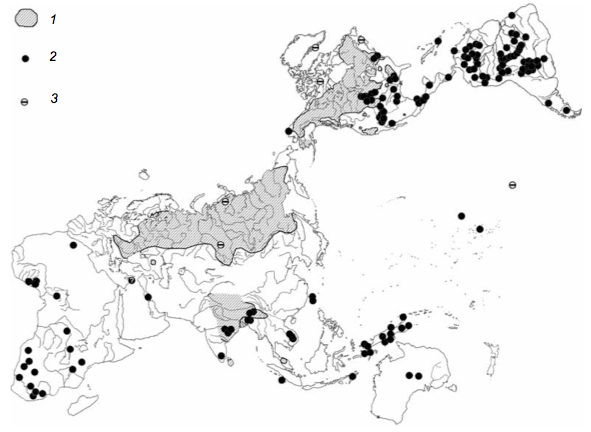
The global distribution of the Earth-Diver and Emergence from the Ground motifs. 1. Earth-Diver; 2. Emergence from the Ground; 3. People Grow from the Ground Like Grass
The areas of the distribution of the two motifs are very sharply demarcated: in the Subarctic and the northern Pacific Rim, Eskimos, Chukchi, Koryaks, Itelmens, Ainu, Ulchi, Nivkhs, Japanese lack Earth Diver. In India, Dravidians only have Emergence from the Ground, while Munda (with well-known East Asian affinities in Y-DNA and EDAR gene, see [Chaubey, Gyaneshwer, et al. 2011. “Population Genetic Structure in Indian Austroasiatic Speakers: The Role of Landscape Barriers and Sex-Specific Admixture,” Mol Biol Evol 28 (2): 1013-1024]) only have Earth-Diver.
Berezkin was compelled to infer that America was peopled by two very distinct populations, although he imagined, rather unparsimoniously, that these two populations were present in Northeast Asia at the same time, with the “Indo-Pacific” one later replaced by subsequent population shifts. Berezkin failed to reference Naposkikh’s surprising finding (Napolskikh V. V. 1992. Drevneishie etapy proishozhdenija narodov ural’skoi jazykovoi sem’i: Dannye mifologicheskoi rekonstrukcii (praural’skii kosmogonicheskii mif). Doktorskaia dissertation. Moskva: Institut etnologii im. N. N. Miklukho-Maklaia AN SSSR), that North American versions of the Earth-Diver motif are more conservative and archaic than their Siberian counterparts. However, he did notice that variation among American Indian versions of Earth-Diver is considerable, with aquatic animals, amphibians (frog, turtle), birds and inverterbrates (crab, beetle) performing the act of retrieving the soil from under the water. In the Old World, the vast majority of Eurasian myths feature birds, but some pockets feature the other types of divers from the American Indian menu of options: South Asian (Birhor, Mundari, Sora, Baiga, Gond, Agharia) and Southeast Asian (Semang, Shan) versions feature invertebrates, Buryat, Mongols and eastern Evenki frog and turtle (in addition to birds) and Balkan versions frogs only (see also Berezkin Y. E. 2007. “Kosmogonicheskie siuzhety ‘nyrialschik za zemlei’ i ‘vykhod liudei iz zemli’ (ogeterogennom proiskhozhdenii amerikanskikh indeitsev),” Archaeology, Ethnography and Anthropology of Eurasia 4 (32), 110-123). In addition, only in the New World one finds such aberrant variations on the Earth-Diver motif as the retrieval of the Sun from under the water (Makushi, Tillamuk) or the emergence of the earth after the deluge from under the water due to mole’s digging a burrow (Huchnom, Yuki). Struggling to explain the diversity of Earth-Diver variants in America, Berezkin resorted to a “differentiation in-situ” explanation without realizing that Old World variants appear to be a subset of this American Indian motif differentiation.
Berezkin also discovered some very special similarities between several Plains Indian myths and myths found in South Siberia.
Since then, Berezkin ventured into African mythology beyond the Emergence from the Ground motif and published two papers in English trying to apply the global patterns of mythological motif variation to the out-of-Africa model of modern human dispersals. One of them appeared in a volume edited by Stanford geneticist Marcus Feldman, a long-term collaborator of Luca L. Cavalli-Sforza’s and a proponent of gene-culture co-evolution (Berezkin, Yuri. “Why Are People Mortal? World Mythology and the ‘Out-of-Africa’ Scenario,” in Ancient Human Migrations: A Multi-Disciplinary Approach, edited by Peter Peregrine, Ilya Peiros and Marcus Feldman. pp. 74-94. Salt Lake City: University of Utah Press, 2009). The other one appeared in the interdisciplinary periodical of the Traditional Cosmology Society based in Edinburgh (Berezkin, Yuri. 2007. “Out of Africa and Further Along the Coast: African-South Asian-Australian Mythological Parallels,” Cosmos 23: 3-28). African mythologies tend to fall into the Indo-Pacific cluster, but data is still being processed. Motif diversity in Africa seems to be lower than outside of Africa, as Berezkin notes (2009, 87) that “dozens (if not hundreds)” of motifs known outside of Africa are unknown in Africa. But all the motifs found in Africa are known elsewhere (variants may, of course, differ). The African-Indo-Pacific-New World cluster is well-defined and the transcontinental similarities there are clear, crisp and unambiguously ancient. The Continental Eurasian cluster is much fuzzier and is muddied by millenia of mutual influences and inventions.
In an attempt to show the mythological connections between Africa, the Indo-Pacific area and the New World, Berezkin chose to focus on one mythical genre, namely the origin of death, because human mortality must have been one of the earliest questions behaviorally modern humans sought answers to.
He included 11 death motifs (Shed Skin, Immortal Moon, Strong and Weak, Stone Sinks Stick Floats, Call of God, Originator of Death Was the First Sufferer, Failed Test, Vengeful Cockroach, Personified Death, The Muddled Message, Plants Get the Life Medicine) into his study and mapped out their worldwide distributions (see below).
A surprising conclusion one can draw from these distributions is that, with the exception of the Plants Get the Life Medicine motif, all origin of death motifs are found in the Americas. The pattern is the same as Berezkin observed in the distribution of the Earth-Diver and Emergence from the Ground motifs. This observation does not sit well with the inference derived from archaeology, paleobiology and genetics that the New World was peopled much later than other continents. If the New World was peopled within the past 15,000 years, while the death myths in questions go back to the formative period of behavioral modernity in African between 100,000 and 45,000 BP, then we have to entertain the unlikely option that this whole collection was still intact and densely distributed somewhere in Northeast Asia waiting for the ice-free corridor to open or for a coastal passage to be discovered. A dramatic serial founder effect postulated by geneticists to explain the difference in molecular diversity between Africans and non-Africans and Asians and American Indians would have resulted in the same effect in cultural traits – populations expanding out of Africa would not have been access to myths circulated in South or West Africa, while populations discovering a passage to the New World would not have known the myths told everywhere else in the world. This puzzling situation is further reflected in the “gap” in the distribution of the death motifs in Siberia. (This however, could simply be a sampling error.)
Berezkin lists 9 more motifs shared between Africa and the Indo-Pacific cluster. 7 of them are found in the Americas. He wants the out-of-Africa and recently into the Americas orthodoxy to work, hence he writes (2009, 92) that the “number of exclusive links between Africa and Eurasian borderlands…is much greater than between Africa and America.” But this is very doubtful. He lists only three motifs – Sky Pushed Up with a Pestle, Sun Eats Her Children and Invisible Spear. Sky Pushed Up with a Pestle is indeed absent from the New World but it’s agricultural associations make it look recent and possibly convergent. Invisible Spear is a close cognate of Invisible Fishhook and the latter, as Berezkin’s own map shows (2009, Fig. 7.16) is found on the Northwest Coast of North America. In the case of Sun Eats Her Children, Berezkin (2007, 9) claims (see also map below from Berezkin 2009) that
“neither for African-Asian (the Sun and the Moon agree to kill their children), Khoisan-Australian (two birds agree to kill their children) nor for typically African versions (two animals agree to kill their mothers) are there any parallels in other parts of the world.”
But this is demonstrably not true, as a similar motif called by Stith Thompson (Tales of the North American Indians. Bloomington, 1996, 353) Death Through Foolish Imitation is widely attested in North America as part of a larger Bungling host motif (see also Boas, Franz. 1916. Tsimshian Mythology. 31st Annual Report of the Bureau of American Ethnology. Washington: Government Printing Office, 698). It is most similar to the Khoisan-Australian submotif references by Berezkin, although in North American versions terrestrial, aquatic and avian species are involved, not just birds. To my knowledge, South American versions of the Bungling host motif (see, e.g,, Macuxi in Mayer, Alcuin R. P. “Lendas Macuxi,” Journal de la Societe des Americanistes 40: 76-77) lack the Death Through Foolish Imitation theme.
The impression one gets is that every motif detected in Sub-Saharan Africa will sooner or later be found in the New World. Berezkin (2007, 21) confirms the striking similarity in some very specific motif features between Sub-Saharan Africa and North America:
“One of the enigmas of African folklore is the relative ability of specific motifs that describe the deeds of tricksters to find parallels in Eurasia and especially in North America. Besides the Ruined painting, I should mention the Bungling host (J2411.3), Feigned death to meet paramour (K1539) or To eat alone (K1867), Eyes put aside and lost, and also the zoomorphic identity of two popular African tricksters, the Hare and the Spider. It is quite possible that the African and the Eurasian-North American areas of the spread of such motifs are not historically related but the hypothesis of their common origins should still be considered.”
Berezkin (2009, 85) concluded,
“[A]lthough mythological data alone are good enough to supply us with facts for producing reasonably plausible hypotheses, they are not sufficient to make a choice among them. Considering the number of recorded cases, which is the greatest both in South America and Sub-Saharan Africa, both regions would be considered as having an equally good chance to be the original homeland of the corresponding populations. Or we could suggest that Southeast Asia was such a homeland from whence the death motif complex was brought to the New World, Australia and Africa. Only genetic, and to a lesser degree, archaeological data on the spread of anatomically modern humans allow us to incorporate mythological data into a particular historic scenario.”
Over the past 10 years, archaeology and genetics swapped ranks in Berezkin’s mind. In 2001, it was archaeology that he casually invoked to adjudicate between several “equally plausible” interpretations of comparative mythological data. He did not trust genetics at that time. Apparently, the solidification of out-of-Africa thinking that took place in the 2000s made Berezkin distrust archaeology because archaeology has failed to provide support for a new, simple solution for modern human origins. In an overzealous effort to please the new “owners” of modern human origin secrets, Berezkin (2009, 92) proclaimed that “the areal distribution of mythological motifs fits well the ‘out-of-Africa’ scenario suggested by geneticists.” His data, however, yields little support for this idea, since nowhere do we see the same reduction of motif diversity with the increasing distance from Africa as geneticists claim they found in genetic data. On the contrary, motif diversity, Berezkin admits, increases outside of Africa. Berezkin admits a pro-African bias when he interprets the same phenomenon of motif segregation between populations in two different ways depending on whether the case occurs in Africa or in America.
“The greatest differences between areal distributions of particular motifs on this list are in the New World. The shed skin motif, so popular in South America, is rare in North America, whereas the distribution of originator of death is exactly the opposite. I can explain this with the same “founder effect” that probably played its part during the initial differentiation between the Indo-Pacific and Continental Eurasian sets of motifs. With extremely low demographic density at the early stages of the peopling of the Americas, many chance factors could have led to the loss of cultural elements by different groups of people and the rapid increase of cultural difference between groups.” (Berezkin 2009, 87).
But then about the Khoisans,
“The lack of the shed skin motif, which is the most popular and wide-spread death motif in the world, is especially remarkable. Such a distribution suggests that the ancestors of the Khoisan were not in close contact with the ancestors of the future non-African populations.” (Berezkin 2009, 92).
Berezkin uses population genetic jargon and concepts to analyze myths, but it does not occur to him that the most natural explanation for the observed pattern is that the Khoisans and American Indians are both equally relic populations maintaining the same high level of population subdivision characteristic of Pleistocene demographies. He is right seeing the same pattern in the sharp division between Continental Eurasian and Indo-Pacific clusters but he underplays the fact that it is precisely in the New World that these barriers are both most stark and most motivated structurally.
It is noteworthy that Berezkin’s data is of cultural kind, but he has no interest in seeking alignment with linguistics or kinship studies in terms of methodology, content or results despite the obvious fact that myths are spoken words and they are part of a social process (Turner, Terrence S. 1985. “Animal Symbolism, Totemism, and the Structure of Myth,” in Natural Mythologies: Animal Symbols and Metaphors in South America, edited by G. Urton. Pp. 49-106. Salt Lake City: University of Utah Press). Attention to such method of historical linguistics as protoform reconstruction or to componential analysis frequently applied to kinship terminologies could help Berezkin operate with more historically objective and non-overlapping motifs. Berezkin’s reliance on an external, “hard” science of molecular genetics to interpret patterns derived from comparative mythology is the same kind of research behavior as Victor Grauer’s use of genetics to interpret ethnomusicological patterns. These counter-intuitive allegiances are in part explainable by the unique interest that both folklorist Berezkin and ethnomusicologist Grauer have in ancient population processes that are usually tackled by paleobiology, archaeology and linguistics. But there is more to this avoidance than just the pragmatics of research priorities. Both Berezkin and Grauer believe in the superiority of “hard” sciences over their own, but this belief rests not on their expertise in these superior fields of inquiry but on appeal to authority. As I argued elsewhere on this weblog, the strategy of seeking answers to folkloristic or ethnomusicological questions in genetics or archaeology is flawed because “hard” sciences are just as labile as the social sciences and humanities and it is only media buzz and PR that make the former look special. For instance, writing in 2007, Berezkin (and Grauer) assumed that modern humans migrated out-of-Africa along the southern coast. Five years after, the southern coastal migration theory is off the table because there is no genetic or archaeological data to illustrate it.
Plus genetics, paleobiology and archaeology are notoriously useless in identifying signs of behavioral modernity. It is up to linguistics, comparative mythology, kinship studies, comparative ethnology and ethnomusicology to make their independent decisions as to what their “cultural” data actually tells us. These disciplines are in a unique position to generate hypotheses about the origin and evolution of behavioral modernity. Berezkin disappoints by shunning Levi-Strauss’s structuralist approach to myth under the pretext that it is “not science” (pers. comm., 2000). This avoidance looks especially odd considering that Levi-Strauss produced the famous 4-volume study of American Indian mythology (also Berezkin’s primary focus), that both Levi-Strauss and Berezkin drew inspiration from Boas and that both of them, in a manner well known from other arm-chair scholars, sought to extricate mythology from ecology, economy and society. Berezkin reduces the function of mythology to intergenerational transmission, horizontal borrowing and ethnic identification. Levi-Strauss reduced it to the task of exemplifying the binary structure of the human mind. But in that Levi-Strauss came closer than Berezkin to appreciating the true significance of comparative mythology for the study of human behavioral evolution.


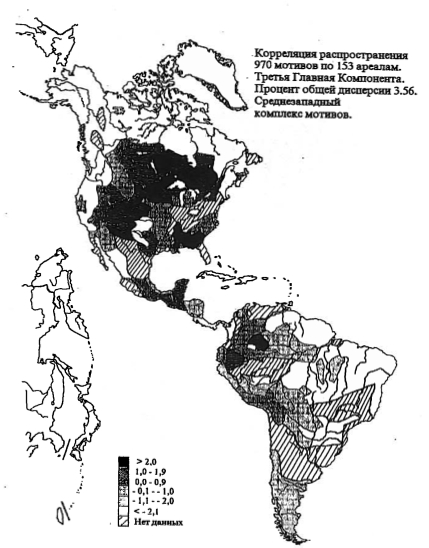








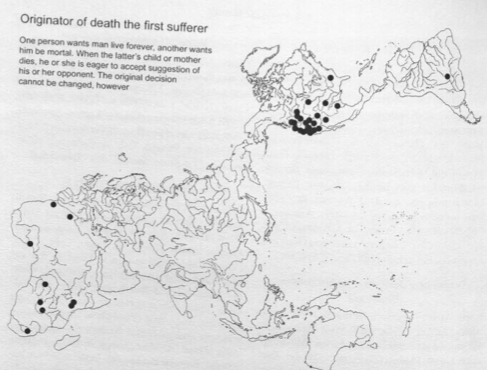
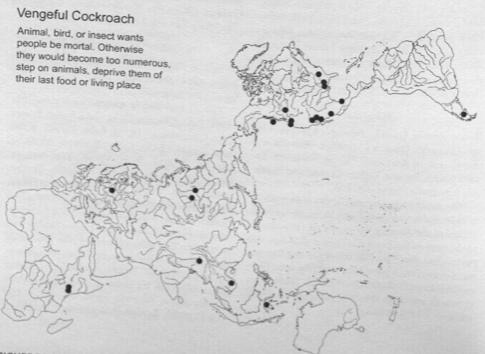




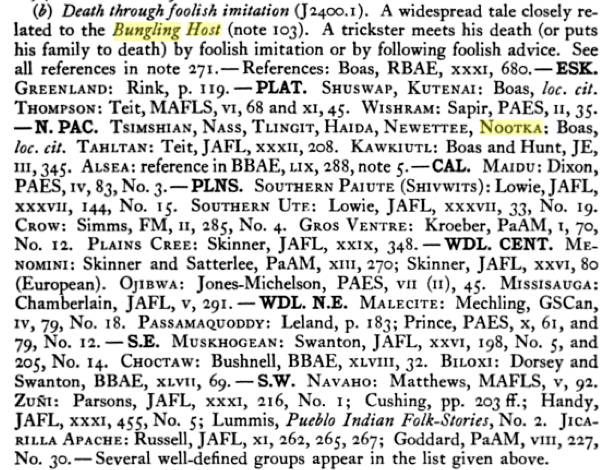


Thank you so much for the informative article!